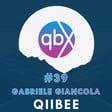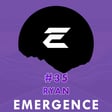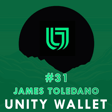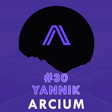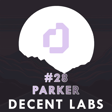
#21 Decentralised money transfer for all assets with Kima CEO Eitan
Eitan is the CEO and co-founder of Kima, a decentralised money transfer protocol that aims to connect all of finance. Kima's vision is to create a transfer layer for all assets, including stocks, fiat and crypto.
The Birth of Kima and Its Mission
Eitan’s fascination with Satoshi Nakamoto's white paper on Bitcoin evolved into a pioneering project to develop the first Bitcoin cold wallet, addressing key security issues within digital currencies. This project laid the foundation for what would eventually become Kima. With a vision to eliminate financial intermediaries, Kima is creating a system that allows for the secure, direct management of funds across different blockchain ecosystems and beyond.
Understanding Kima: A Blockchain Relayer and Settlement Layer
At its core, Kima functions as both a relayer and a settlement layer within the blockchain sphere, facilitating secure transactions. Unlike traditional systems that depend heavily on intermediaries such as banks or payment platforms, Kima leverages blockchain technology to execute transactions directly within its network. This approach not only reduces transaction fees but also significantly enhances the security and speed of global money transfers.
Kima's Impact on Financial Transactions
Kima’s approach aims to address several critical pain points in the current financial system, including high fees, slow transfer speeds, and security vulnerabilities. By automating and decentralizing the transaction process, Kima allows users to move money across borders without the need for costly intermediaries like SWIFT or PayPal. This could revolutionize remittances and international business transactions, making them more accessible to a global audience.
Eitan also highlighted the platform’s unique approach to managing funds without traditional smart contracts, which are often susceptible to hacks. Instead, Kima relies on the blockchain itself or manage transactions.
The Road Ahead: Scalability and Future Plans
Looking to the future, Kima plans to expand its services to support a wider range of currencies and blockchain networks, enhancing interoperability in the financial sector. This includes adding support for fiat currencies, creating a bridge between traditional banking systems and modern blockchain technology. The ultimate goal is to make financial transactions as seamless and straightforward as sending an email.
As blockchain technology continues to mature, protocols like Kima offer that crucial infrastructure layer that developers can use to build a new generation of applications and services.
This podcast is fueled by Aesir, the smartest crypto trading bot platform on the market. Sign up and use code AESIRPOT20 at checkout for 20% OFF your subscription.




